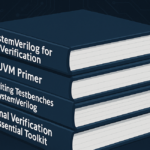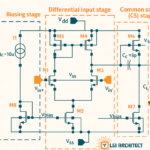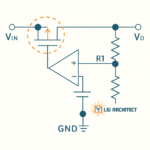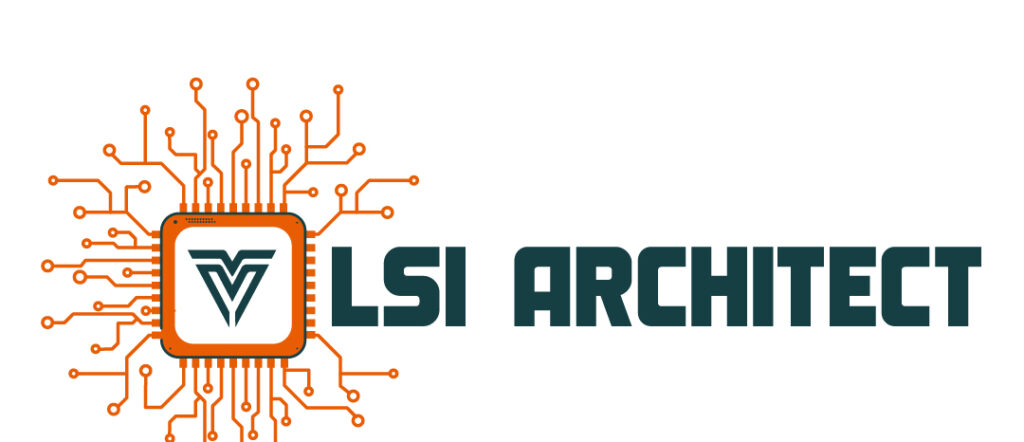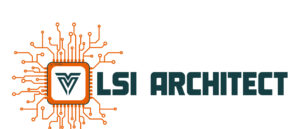Expert Review: A Digital Low Dropout (LDO) Voltage Regulator Using Pseudo flash Transistors
🔗 Title: A Digital Low Dropout LDO Voltage Regulator Using Pseudo flash Transistors
📌 Category: Analog & Mixed-Signal IC Design, Power Management, Semiconductor Research
📌 Keywords: Digital LDO, Low-Dropout Regulator, Pseudo flash Transistors, Power Efficiency, CMOS Voltage Regulation, Power Management ICs (PMICs), Power Supply Design, Low-Power Electronics
Reference: C. -Y. Lee and S. P. Khatri, “A Digital Low Dropout (LDO) Voltage Regulator Using Pseudoflash Transistors,” in IEEE Transactions on Very Large Scale Integration (VLSI) Systems, vol. 31, no. 12, pp. 1960-1969, Dec. 2023, doi: 10.1109/TVLSI.2023.3317414.
keywords: {Transistors;Regulators;Voltage control;Logic gates;Threshold voltage;Programming;MOSFET;Digital low dropout (LDO) regulator;low output voltage ripple;multiple current ranges;pseudoflash transistor},
Introduction: Advancing Power Regulation in IC Design
In modern low-power semiconductor applications, power management circuits play a crucial role in ensuring efficiency, stability, and minimal energy wastage. The research paper “A Digital Low Dropout LDO Voltage Regulator Using Pseudo flash Transistors” introduces a novel approach to digital LDO design, leveraging pseudo flash transistors for enhanced performance.
Traditional analog LDO regulators have been widely used, but digital LDOs (D-LDOs) are gaining traction due to their scalability, fast response time, and integration capabilities in CMOS technology. The authors propose an innovative pseudo flash transistor-based architecture that addresses key challenges in power efficiency, transient response, and voltage regulation accuracy.
This review explores the key contributions, technical strengths, experimental results, and future scope of the proposed digital LDO regulator, shedding light on its potential impact on low-power IC design.
🔹Key Contributions & Innovations
The paper presents several groundbreaking advancements in digital LDO voltage regulation that could shape the future of power management ICs (PMICs):
1. Digital LDO Based on Pseudo flash Transistors
Unlike conventional LDO regulators, which rely on error amplifiers and pass transistors, this approach introduces a digitally controlled LDO utilizing pseudoflash transistors to regulate output voltage with enhanced efficiency and minimal power dissipation.
✔ Pseudo flash transistors provide low-leakage characteristics, reducing standby power consumption.
✔ Digitally controlled architecture ensures scalability with advanced CMOS nodes.
✔ Eliminates traditional error amplifiers, making it simpler and more power-efficient.
2. Enhanced Power Efficiency & Low-Voltage Operation
Low-Dropout Regulators (LDOs) must operate efficiently at ultra-low voltages to meet the power demands of IoT devices, wearable electronics, and ultra-low-power SoCs.
✔ The proposed digital LDO operates efficiently at sub-1V voltages, making it ideal for battery-powered applications.
✔ Improved power conversion efficiency (PCE) compared to conventional LDOs.
✔ Minimized quiescent current, leading to extended battery life in portable devices.
3. Fast Transient Response for Dynamic Load Conditions
Power management circuits must respond quickly to sudden load variations to maintain stable voltage levels.
✔ Faster transient response compared to traditional analog LDOs, ensuring stable operation under dynamic workloads.
✔ Lower output voltage ripple, improving circuit reliability and performance.
✔ Enhanced noise rejection, ensuring robust performance in mixed-signal SoCs.
Technical Highlights & Implementation
Architecture of the Proposed Digital LDO
The pseudoflash transistor-based digital LDO consists of the following core components:
✅ Voltage Sensing & Control Logic – Monitors the output voltage and dynamically adjusts control signals.
✅ Pseudoflash Transistor Array – Functions as the pass element for voltage regulation.
✅ Clock-Gating Mechanism – Reduces switching losses and enhances energy efficiency.
✅ Digital Feedback Loop – Ensures stability and dynamic adjustment of load variations.
The integration of these components results in a compact, low-power, and highly responsive digital LDO regulator, suitable for modern semiconductor applications.
Experimental Results& Performance Analysis
🔹 Power Efficiency & Voltage Regulation
The proposed pseudoflash transistor-based LDO demonstrates high power efficiency, making it suitable for low-power embedded systems.
📌 Key Findings:
✔ Higher Power Conversion Efficiency (PCE) compared to traditional analog LDOs.
✔ Lower output voltage variations under different load conditions.
✔ Optimized transient response, ensuring stability in dynamic environments.
🔹 Comparison with Conventional LDOs
| Parameter | Proposed Digital LDO | Conventional Analog LDO |
|---|---|---|
| Power Consumption | ✅ Lower | ❌ Higher |
| Voltage Ripple | ✅ Minimal | ❌ Higher |
| Load Regulation | ✅ Improved | ❌ Moderate |
| Scalability | ✅ CMOS-Friendly | ❌ Limited |
| Integration | ✅ Digital-Friendly | ❌ Analog-Centric |
The results indicate that pseudoflash transistors significantly enhance LDO performance, making them a viable solution for next-generation power management ICs.
🔹 Limitations & Future Scope
While the proposed digital LDO architecture offers several advantages, some limitations remain:
1. Need for Parasitic-Aware Design
- The current design does not fully model parasitic effects, which may impact high-frequency performance.
- Solution: Advanced post-layout simulations and parasitic-aware routing can improve accuracy.
2. Limited Validation for Advanced Technology Nodes
- The paper primarily tests the design in a specific CMOS node (likely 130nm or 65nm).
- Future Work: Extending the architecture to sub-10nm FinFET technology would improve scalability.
3. AI-Powered Optimization for Voltage Regulation
- The LDO control mechanism could benefit from machine learning algorithms to dynamically adapt to varying load conditions.
- Future Research: Implementing AI-based control mechanisms could further enhance regulation accuracy and response time.
Conclusion:
A Breakthrough in Digital LDO Design
The paper introduces an innovative approach to digital LDO voltage regulation, leveraging pseudo flash transistors for enhanced power efficiency, transient response, and scalability.
Strengths of the Proposed Digital LDO:
✔ Fully digital design, enabling seamless integration in advanced CMOS processes.
✔ Lower power consumption, making it suitable for low-power SoCs, wearables, and IoT devices.
✔ Improved transient response, ensuring better voltage regulation under dynamic loads.
Limitations & Future Enhancements:
🔹 Needs further testing on FinFET nodes to ensure scalability.
🔹 Could benefit from AI-based adaptive regulation for further performance gains.
🔹 Future research should explore parasitic-aware optimization for improved accuracy.
🔗 This research marks a significant step forward in digital power management IC design, paving the way for more efficient and scalable voltage regulators in modern electronics.
🚀 Final Verdict: Highly recommended for engineers, researchers, and industry professionals working on low-power and efficient voltage regulation soluti
FAQs


